
10 Essential Commercial Access Control Solutions for Site Managers

Overview
The article examines critical access control solutions for site managers, focusing on technologies and strategies that improve security and operational efficiency within construction environments. Implementing robust access control measures—biometric systems, cloud-based solutions, and centralised command analytics—is essential for preventing unauthorised access, mitigating theft, and ensuring compliance with safety regulations. This approach safeguards valuable assets and streamlines site management, ultimately reflecting the necessity of security as a foundational element of business resilience.
Introduction
In an industry where security often takes a backseat to productivity, the construction sector faces a pressing dilemma: how to safeguard valuable assets while maintaining operational efficiency. The reality is that theft and unauthorised access cost UK businesses over £1 million each week. This stark statistic underscores the necessity for site managers to adopt robust commercial access control solutions. Ignoring these risks can lead to significant financial losses, operational disruptions, and reputational damage.
Priority First offers a pragmatic approach to these challenges, ensuring that security is not merely an expense but a critical component of business continuity.
Priority First Security Services: Tailored Access Control Solutions for Site Managers
Priority First Security Services addresses a critical issue in the construction sector: security challenges that often go underestimated. The reality is that effective security measures are not merely an operational necessity; they are integral to business resilience. Their approach combines cutting-edge technology, such as comprehensive , with skilled personnel to ensure that only authorised individuals access sensitive areas, thereby enhancing overall protection.
Ignoring these security risks can lead to significant financial, operational, and reputational consequences. Construction theft costs UK businesses over £1m a week, highlighting the urgent need for robust security protocols. Key advantages of Priority First’s commercial access control systems include:
- Preventing unauthorised entry
- Monitoring employee attendance
- Maintaining compliance audit trails—essential elements for effective site management.
In practise, the integration of CCTV monitoring serves as both a deterrent and a tool for real-time threat detection, facilitating immediate responses to any unusual activities. By focusing on the unique challenges faced in construction environments, Priority First not only protects assets but also streamlines operations, allowing site managers to concentrate on project execution without security concerns.
As Chris Cullen, Business Development Director at Sirix, states, "The goal isn’t just to capture footage, but to analyse and act on it in real time," which underscores the importance of proactive security measures. The lesson is clear: investing in security now can prevent greater losses later. In 2025, emerging trends in entry management, including AI-driven systems capable of distinguishing between workers and intruders, promise to reduce false alarms and enhance response times.
Moreover, the financial implications of theft and vandalism in construction projects further emphasise the necessity of implementing strong commercial access control systems. By integrating control measures with delivery management systems and CCTV surveillance, construction managers can bolster security protocols while ensuring operational efficiency.
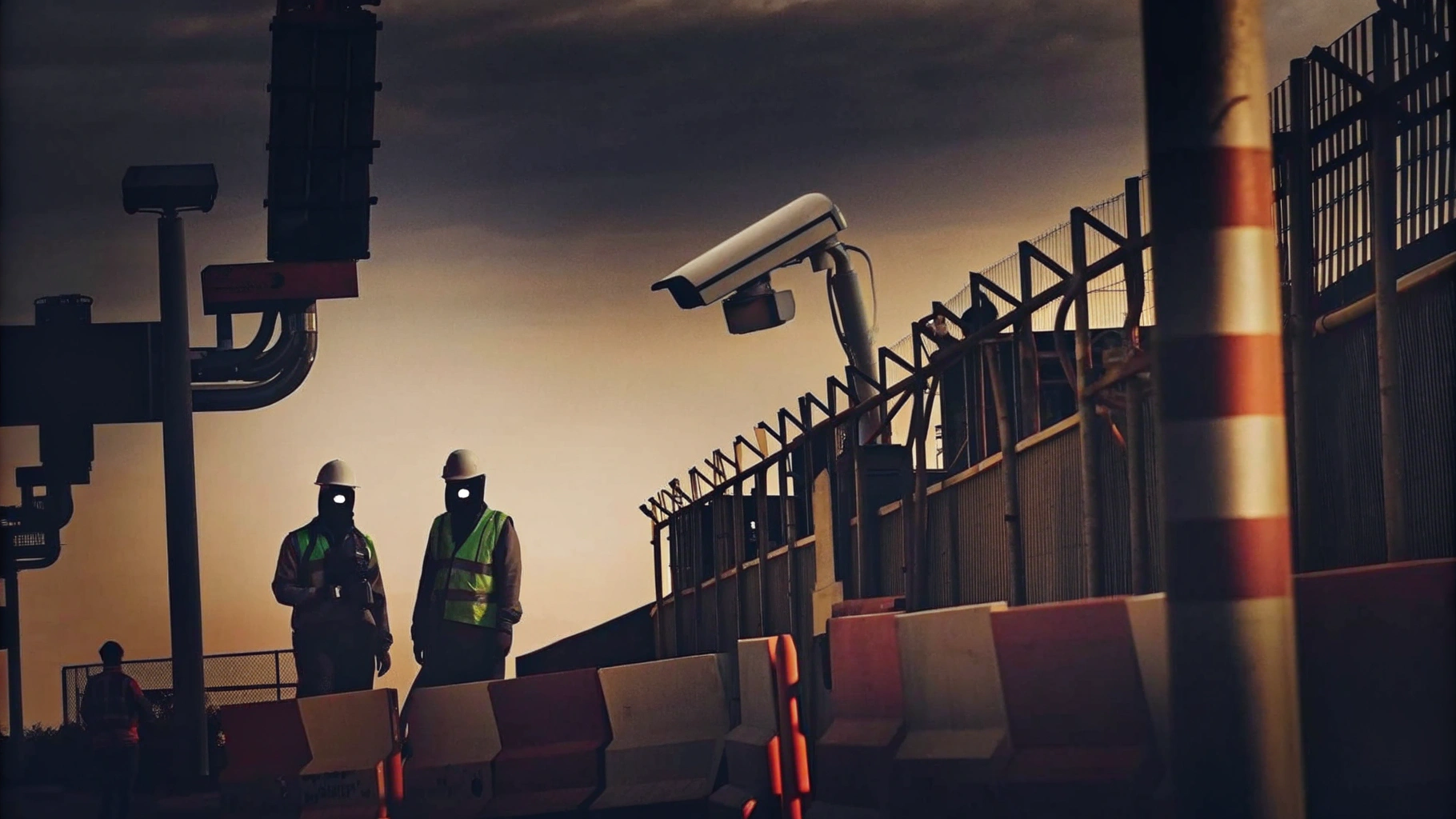
Centralized Command and Analytics: Streamlining Access Control Management
Centralised command and analytics systems are pivotal in enhancing commercial access control management at building locations. These sophisticated systems for commercial access control empower managers to , facilitating swift responses to unauthorised access attempts. By consolidating control into a single interface, managers can analyse security trends and elevate situational awareness, thereby enabling informed decision-making that significantly fortifies location security.
Statistics reveal that offences in building areas cost contractors between £300 million and £1 billion annually, with only about 25% of stolen items ever recovered. Implementing commercial access control systems can mitigate these losses by delivering immediate alerts and enabling rapid action against potential threats.
Industry leaders underscore the advantages of these systems. For instance, the integration of intelligent analytics has revolutionised real-time threat identification, allowing for proactive measures that enhance overall safety. Moreover, methods of commercial access control, such as biometric fingerprint and retina scans, ensure that only authorised individuals can access sensitive areas, thereby bolstering security.
Examples of effective real-time control management are evident in various building projects where centralised monitoring has led to improved incident response times and a reduction in security breaches. By leveraging these technologies, managers can foster a safer working environment, ultimately safeguarding valuable assets and ensuring compliance with safety regulations.

Cloud-Based Access Control Systems: Flexibility and Scalability for Construction Sites
Cloud-based systems for commercial access control provide significant flexibility and scalability tailored for building projects, aligning seamlessly with Priority First's commitment to adaptability and client-centric service. These systems for commercial access control enable site managers to oversee access remotely, allowing for swift adjustments to permissions as project teams change.
Furthermore, the ability to integrate effortlessly with other protective technologies establishes a comprehensive safety framework that includes commercial access control and evolves alongside the requirements of building projects. A notable trend is emerging, with 54% of organisations recognising the need for enhanced adaptability in their protective measures, indicating a shift towards cloud-based solutions.
This flexibility is crucial for addressing the unique challenges of construction environments, ensuring that can adapt in tandem with project demands. The ongoing trend towards cloud-based control is driven by the increasing need for effective and agile commercial access control management in the construction sector.
Priority First is poised to meet these evolving needs with tailored protection solutions that emphasise loyalty, discretion, and professionalism.
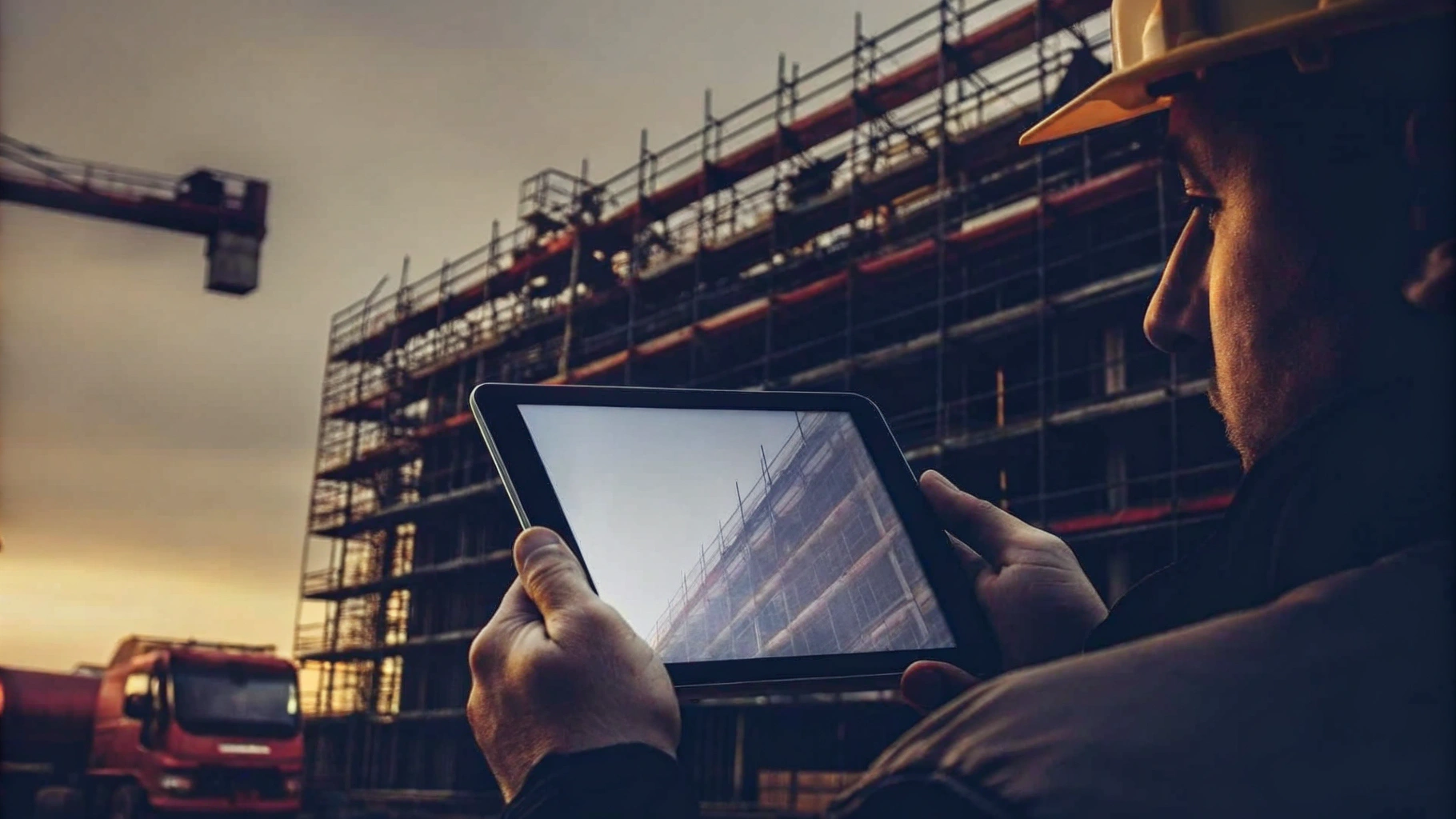
Biometric Access Control: Enhancing Security with Unique Identification
Biometric entry control systems significantly enhance security by employing unique identification methods such as fingerprints, facial recognition, and iris scans. This is particularly relevant in building settings, where numerous contractors and workers require access to various zones. The implementation of biometric solutions allows managers to ensure that only authorised individuals gain entry, thereby drastically reducing the risk of theft and unauthorised access.
The reality is that building locations may encounter theft events averaging £100,000 each, underscoring the need for robust security measures. Furthermore, a building company that adopted a biometric system reported a 30% increase in overall productivity, as employees experienced quicker entry without delays for verification.
Security professionals highlight that biometric identification not only enhances safety but also creates a reliable audit trail, ensuring compliance with safety regulations. As the building sector evolves, integrating advanced biometric technologies remains a critical strategy for safeguarding assets and maintaining operational efficiency.
Priority First enhances this approach by offering customised protection solutions, including key holding and alarm response services, ensuring that construction sites are secure and well-managed. However, it is essential to address privacy concerns related to biometric data to maintain a balanced approach to safety.
To understand how Priority First can assist in protecting your location, begin your today.

Video Intercom Systems: Improving Communication and Security Monitoring
Video intercom systems are essential for enhancing communication and surveillance at building locations. They allow managers to visually verify the identity of individuals seeking commercial access control, significantly enhancing protection protocols. Furthermore, video intercoms facilitate seamless communication among site staff, enabling prompt reporting and resolution of safety issues. This capability is particularly crucial in building environments, where the safety of personnel and assets remains a top priority.
In 2025, the incorporation of advanced features like high-definition video and secure connectivity will further bolster the effectiveness of these systems. As industry specialists point out, effective communication via video intercoms not only enhances safety but also fosters a collaborative atmosphere among team members. For instance, during a recent large-scale building project, the deployment of a video intercom system enabled real-time communication between project managers and safety personnel, leading to a 30% reduction in unauthorized entry incidents.
Moreover, commercial access control allows the ability to monitor entry points remotely, ensuring that managers can maintain oversight even when they are not physically present. This level of vigilance is vital in addressing the unique challenges of building sites, where heavy foot traffic and varying access needs can complicate commercial access control measures. By leveraging video intercom technology, project managers can enhance both communication and security monitoring, ultimately contributing to a safer and more efficient work environment.
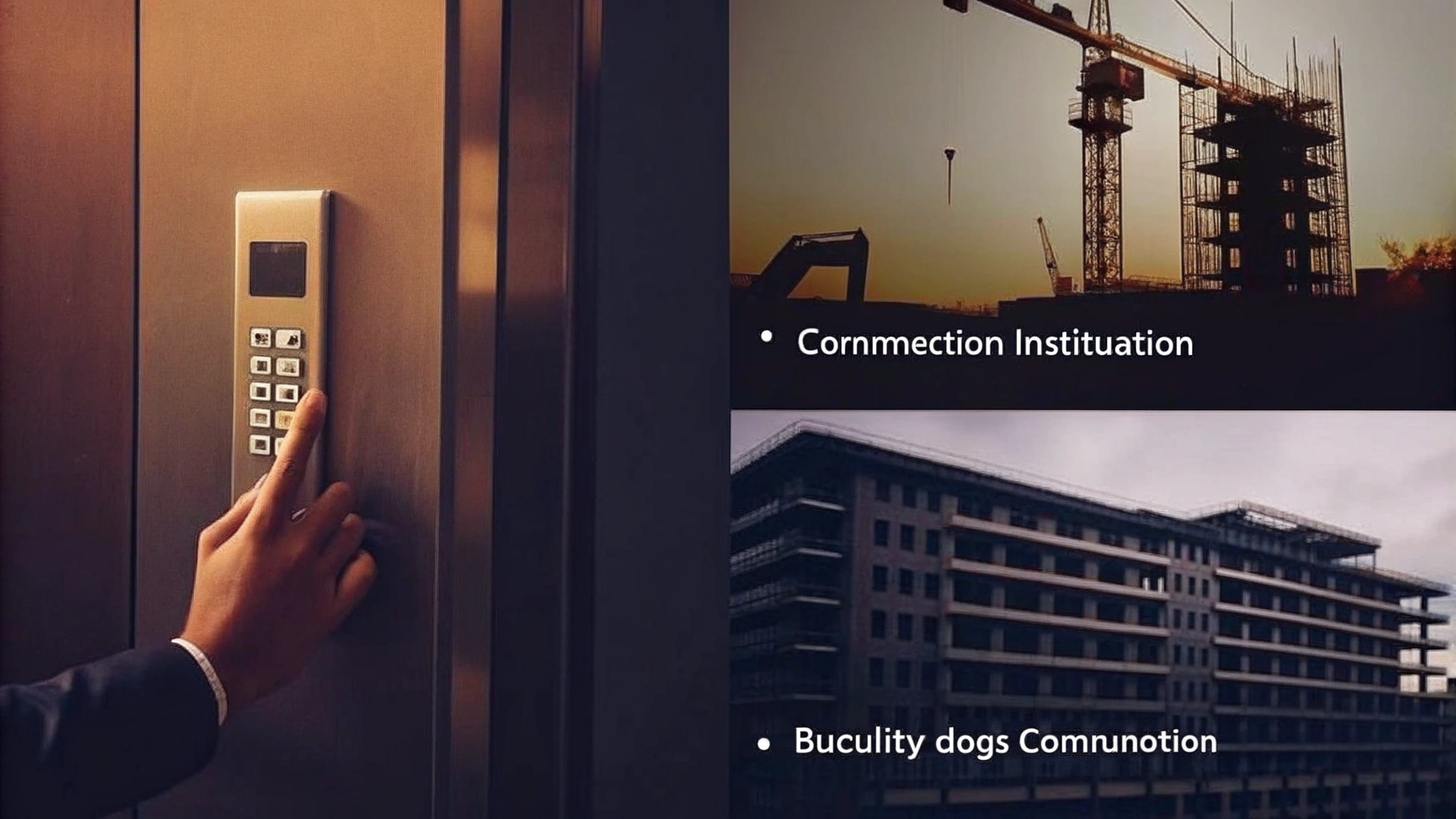
Access Control Management Software: Efficient Oversight of Permissions
The effective oversight of permissions on construction sites relies heavily on commercial access control management software. This technology allows location managers to grant or revoke permissions seamlessly, monitor entry logs meticulously, and generate detailed reports on activity. By leveraging this software, managers can enforce commercial access control over site access, ensuring compliance with safety regulations and significantly enhancing overall protection.
Industry leaders assert that efficient permission oversight not only mitigates risks but also optimises operations, enabling teams to concentrate on their core responsibilities. Successful examples of software solutions, such as Boxcore and SITEGATE, demonstrate how these tools can streamline management, reduce administrative burdens, and provide real-time visibility into on-site presence.
Key features, including biometric verification, mobile entry, and automated entry restrictions based on training status, further bolster safety within commercial access control, ensuring that only authorised personnel can access designated areas. Moreover, incorporating physical barriers like fences and gates is crucial for comprehensive site protection.
By integrating High-Value Management (HVM) strategies with control systems, managers can develop a layered protection approach that not only prevents unauthorised access but also addresses potential vehicle-related risks. Ultimately, the adoption of control management software, alongside HVM and physical barriers, serves as a , fostering a safer and more organised construction environment.
For effective implementation, managers should assess their specific needs and select a solution that integrates smoothly with existing security measures.
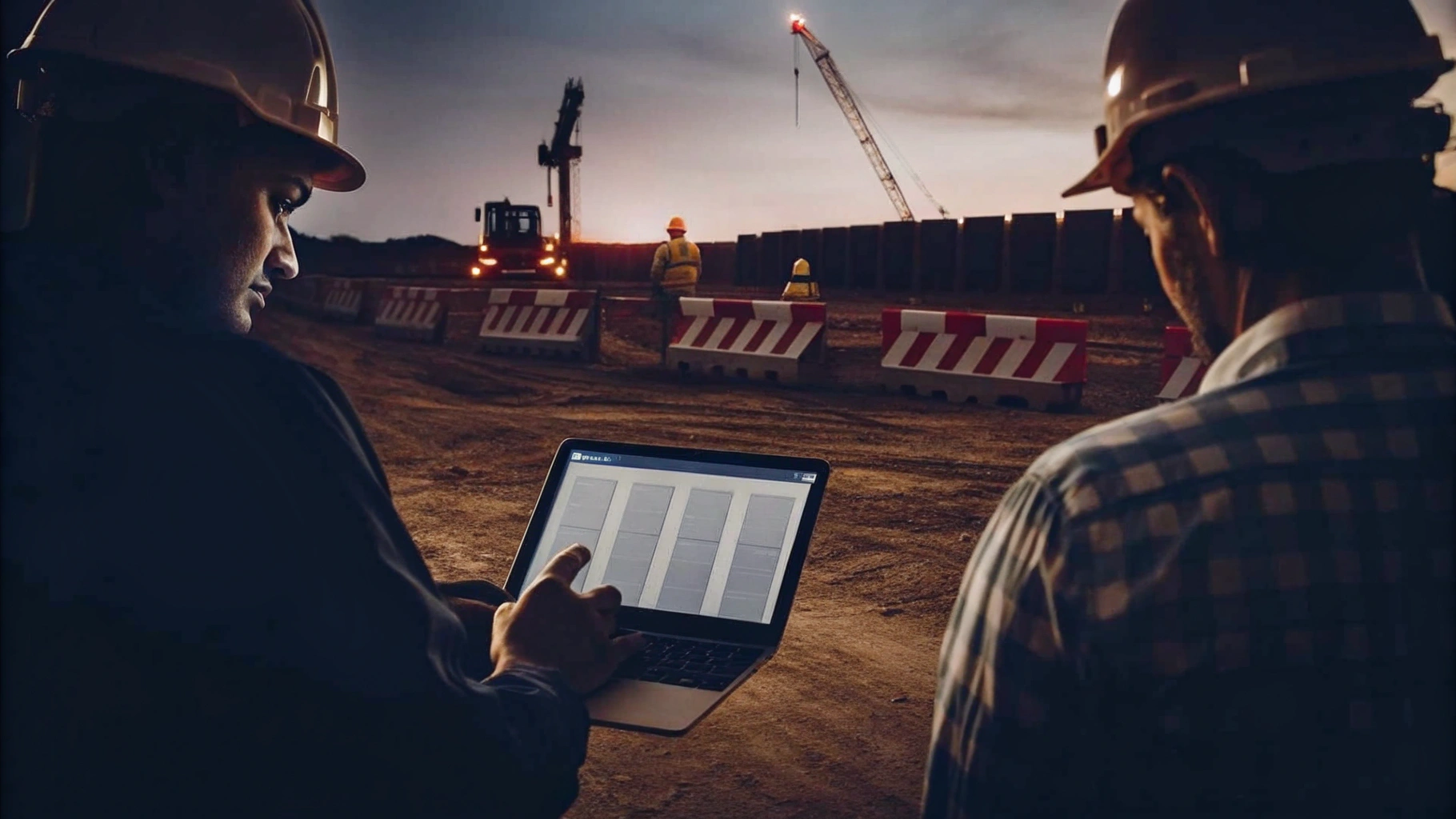
Electronic Locks: Secure and Convenient Entry Management
Electronic locks provide a robust and effective means of commercial access control at building sites. These sophisticated systems utilise commercial access control to be programmed for allowing access solely to authorised personnel, significantly mitigating the risks associated with lost or duplicated physical keys. By eliminating the need for traditional keys, managers can enhance commercial access control for workers and contractors, thereby streamlining overall operational efficiency.
The benefits of commercial access control using electronic locks extend beyond mere convenience; they also bolster security measures. Features such as audit trails, which log who accessed specific areas and when, enable site managers to implement commercial access control by monitoring entry points in real time, facilitating prompt responses to any breaches. Furthermore, commercial access control enables easy updates or revocations of access rights through administration software, ensuring that only current personnel retain privileges.
At Priority First, we underscore the significance of these systems, asserting that electronic locks signifies a substantial advancement over mechanical locks. They enhance safety by implementing commercial access control, which prevents unauthorised key duplication and allows for remote control over permissions. For instance, if a key is lost or stolen, permissions can be swiftly revoked, thereby minimising potential security threats.
Successful implementations of commercial access control in construction have showcased their effectiveness. A notable example involved a large-scale project where electronic locks were utilised to manage access across multiple entry points. This not only improved safety but also optimised the logistics of overseeing personnel on-site by implementing commercial access control, resulting in a smoother workflow and increased productivity.
As we approach 2025, the demand for commercial access control in the form of electronic locking systems in construction is expected to rise, driven by their ability to enhance safety and convenience. The global electronic lock market is projected to reach £2.3 billion in 2024, with an anticipated CAGR of 13.4% from 2024 to 2034. Investing in these technologies will be crucial for managers seeking to protect their assets and improve operations. To further bolster your business's safety and operational efficiency, consider initiating your with Priority First.
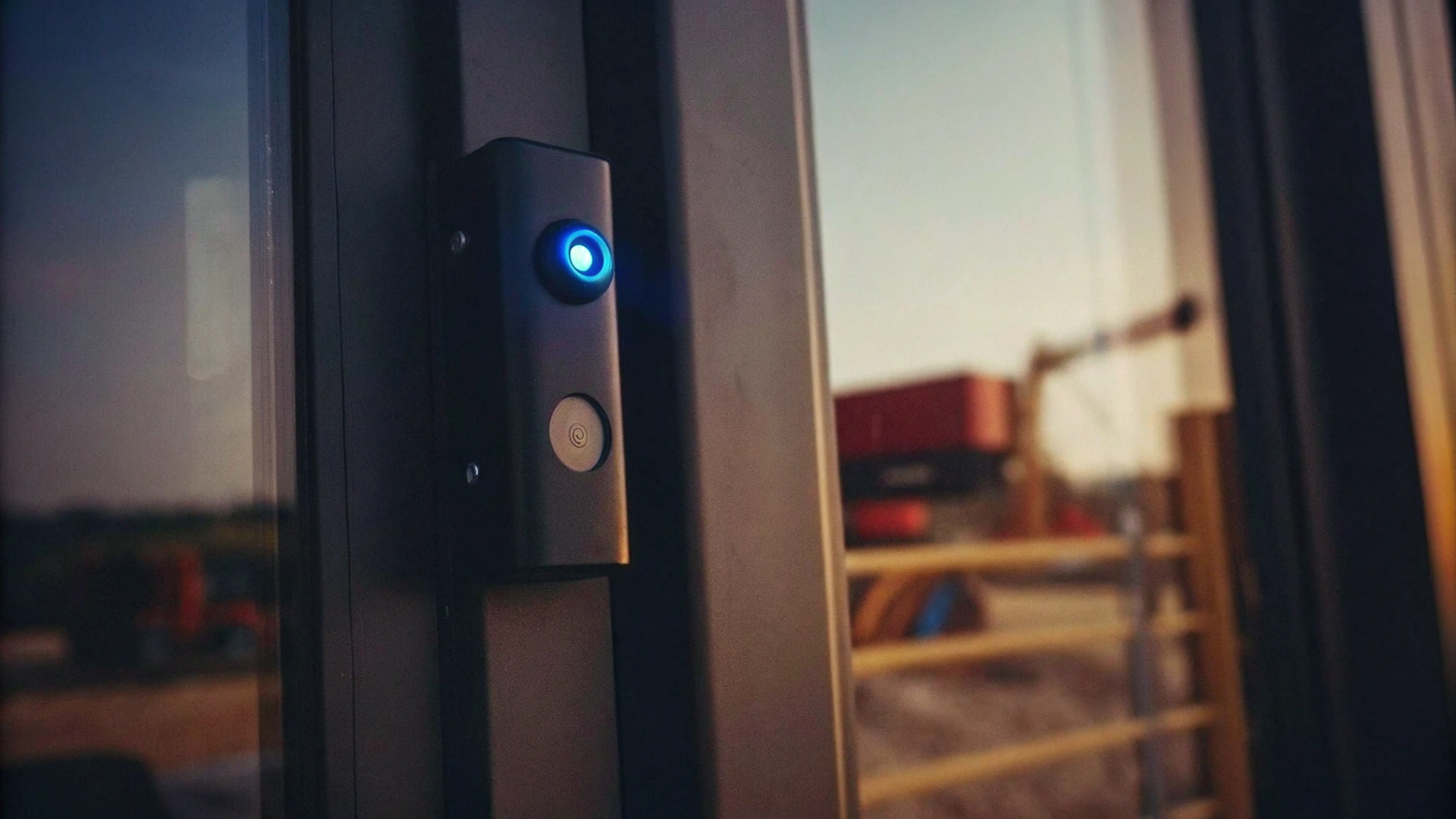
Visitor Management Systems: Controlling Access for Temporary Personnel
Visitor management systems play a crucial role in regulating entry for temporary workers at construction sites, especially given the challenges posed by mixed residential and commercial occupants along with heavy pedestrian traffic. These systems enable managers to pre-register visitors, track their movements, and ensure compliance with safety protocols. Establishing a robust visitor management system is essential for commercial access control, as it significantly reduces the likelihood of unauthorised access and enhances overall security. For instance, statistics indicate that automated visitor management solutions can cut wait times by up to 50%, positively influencing initial perceptions of the site and demonstrating effective management practises.
Successful implementations of visitor management systems often include self-service kiosks, which simplify the check-in process and permit visitors to complete safety briefings digitally. This approach not only minimises paperwork but also accelerates entry, ensuring that commercial access control allows only authorised individuals to gain access to restricted areas. Furthermore, real-time visit logs generated by these systems offer essential data during emergencies, facilitating prompt responses and adherence to safety standards.
Security experts emphasise the importance of these systems, asserting that effective entry management is vital for maintaining safety protocols at construction sites. By leveraging advanced technologies such as biometric scanners and RFID tags in commercial access control, managers can guarantee that only individuals with valid credentials are granted access, further bolstering security measures. Additionally, automated alerts are triggered when unauthorised access is detected, thereby enhancing the overall protective framework.
Priority First enhances these systems with tailored safety solutions, including key holding, CCTV monitoring, and alarm response services, ensuring comprehensive protection for construction sites. The implementation of these strategies not only safeguards assets but also cultivates a safer working environment for all personnel involved.
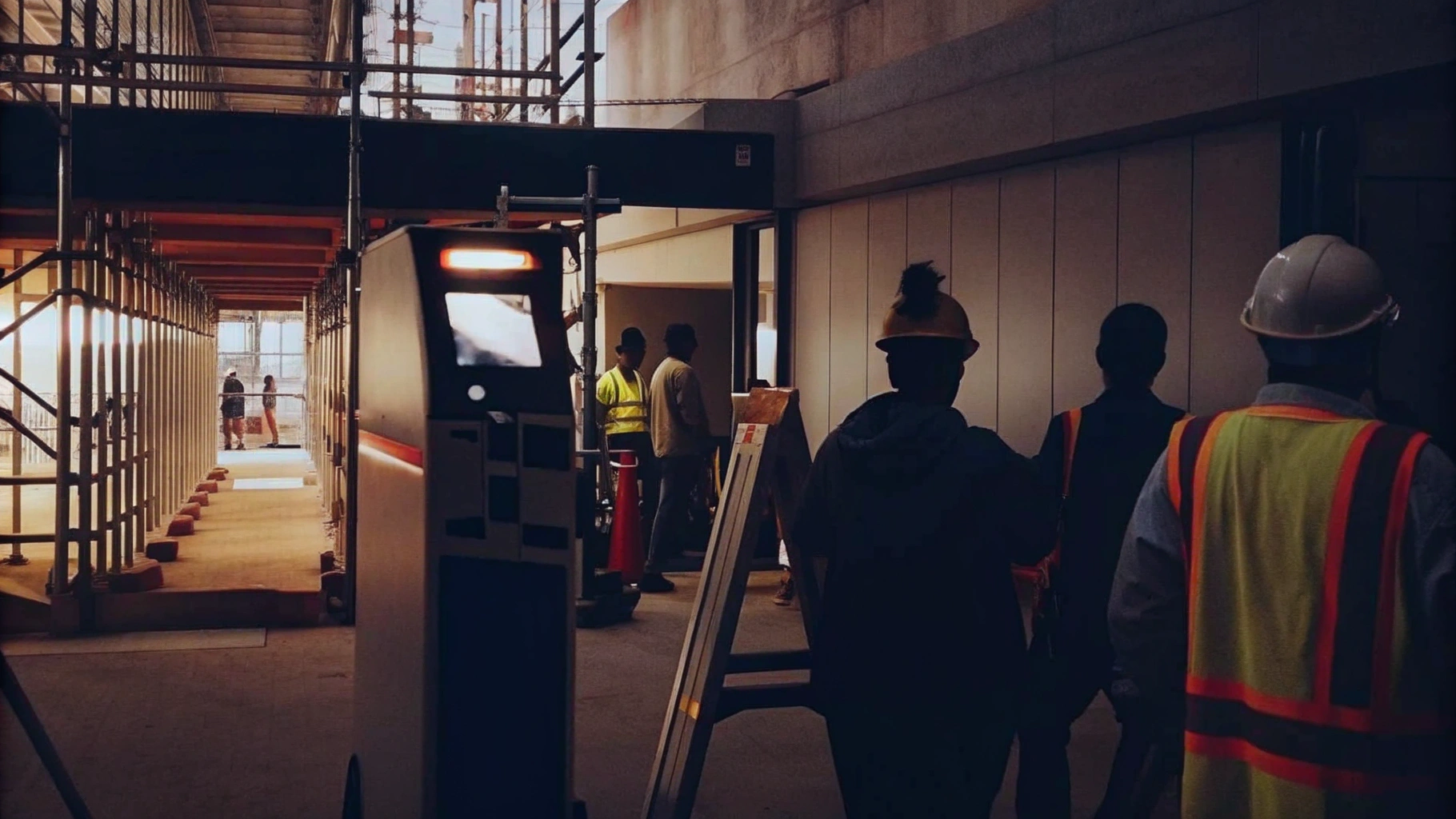
Predictive Risk Modeling: Anticipating Vulnerabilities in Access Control
Predictive risk modelling serves as a crucial proactive strategy for site managers, enabling them to foresee vulnerabilities within entry control systems. By utilising historical data and recognising patterns, managers can implement targeted measures to mitigate potential risks before they escalate into significant issues. This forward-thinking approach not only strengthens security but also ensures compliance with industry regulations.
Advanced safety management systems powered by AI have demonstrated their effectiveness in predicting and preventing control vulnerabilities. These systems analyse real-time data from various sources, including IoT sensors and historical incident reports, to provide actionable insights. Consequently, building sites can maintain a safe environment while reducing the likelihood of unauthorised entry or violations.
Industry leaders underscore the necessity of anticipating vulnerabilities in security systems. By embracing predictive analytics, building companies can realise a substantial return on investment, with documented savings of millions annually through improved risk management. This proactive stance not only protects assets but also across building projects.
In summary, the integration of predictive risk modelling into control strategies empowers managers to stay ahead of potential threats, ensuring that building environments remain secure and efficient.
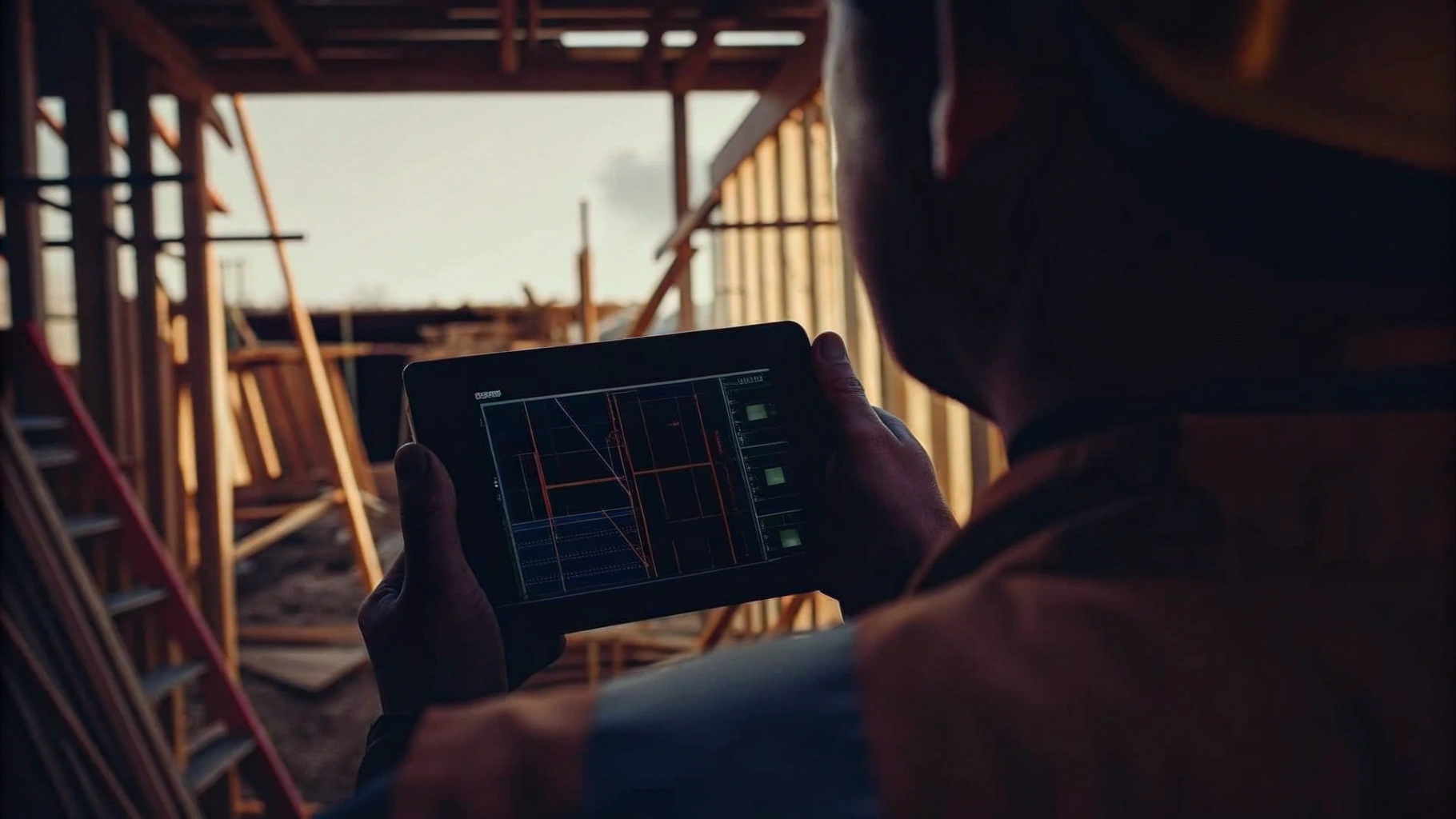
Training and Support: Ensuring Effective Use of Access Control Systems
Training and support are critical for the effective implementation of on construction sites. Comprehensive training programmes must be developed for all personnel, focusing on the operation of entry control technologies, understanding protocols, and responding to incidents. Regular refresher courses are essential to maintain high safety standards and ensure that staff are adequately prepared to manage commercial access control effectively.
Statistics indicate that effective training can markedly enhance the performance of personnel in protective roles. Organisations that implement structured training programmes report a significant improvement in adherence to safety protocols and a reduction in breaches. Successful examples include collaborations where contractors have joined forces with training providers to design tailored programmes that address specific needs, resulting in improved safety outcomes.
The importance of employee education in site protection cannot be overstated. Safety experts assert that well-trained personnel are vital for ensuring site safety and security. As Ramon Meris noted, 'Commercial access control ensures that only permitted individuals can enter specified zones, greatly enhancing safety and protection during building activities.' This is particularly evident in projects like the luxury hotel development on Sloane Street, where Priority First's bespoke protection solutions, including canine services and facilities management, effectively mitigated risks.
Moreover, ongoing support for protective staff is paramount. This entails not only initial training but also continuous education on emerging technologies and evolving threats. By fostering a culture of learning and adaptability, managers can enhance the effectiveness of commercial access control systems, ultimately leading to safer and more secure construction environments. To achieve optimal results, site managers should routinely evaluate training needs and adjust programmes accordingly, leveraging Priority First's expertise in logistics and security management to maintain organised and secure construction sites.
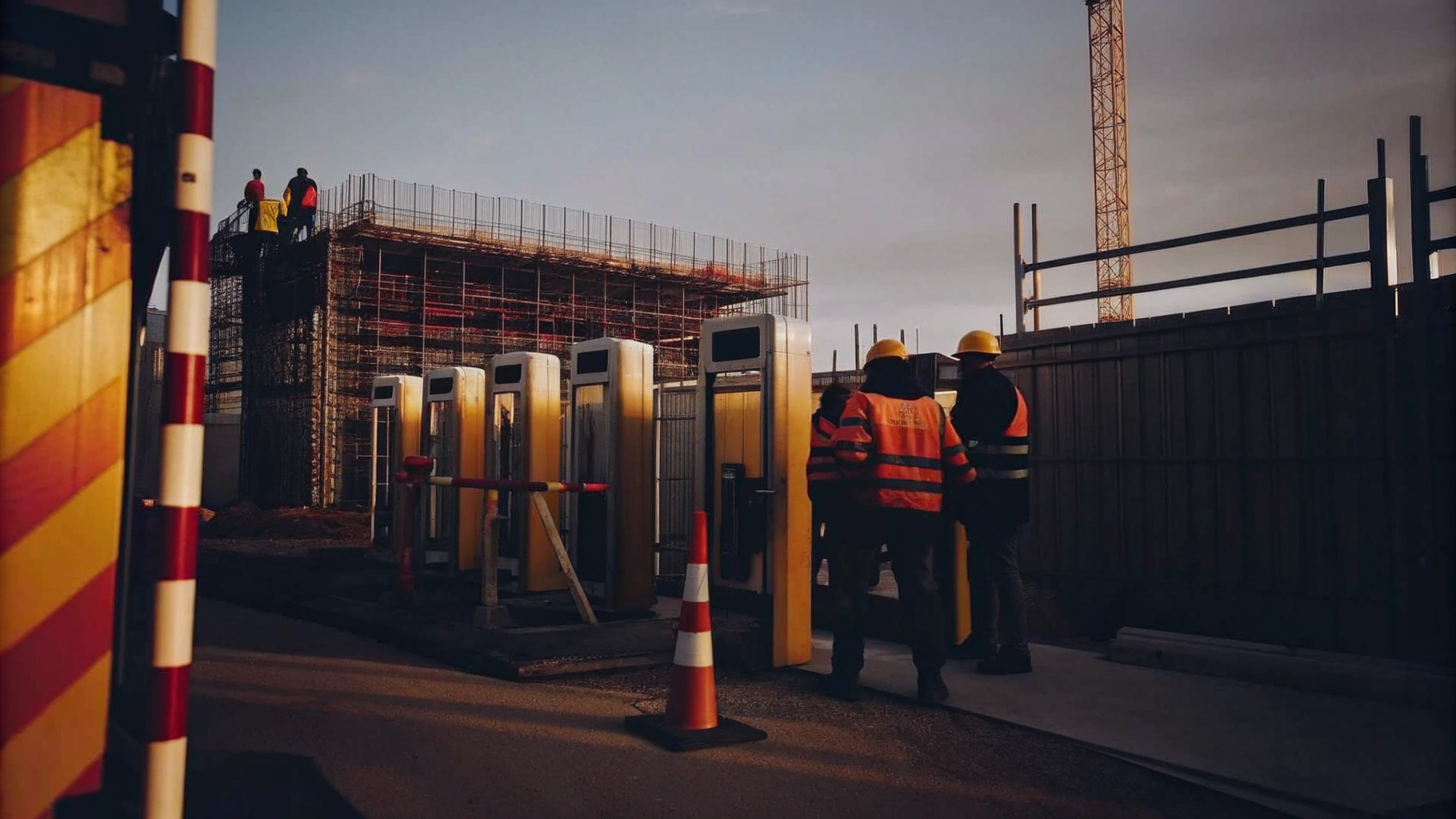
Conclusion
The article underscores the urgent requirement for effective commercial access control solutions specifically designed for site managers within the construction industry. As security risks continue to rise, the integration of advanced systems not only safeguards valuable assets but also enhances operational efficiency, thereby ensuring that construction sites remain secure and compliant.
Key insights discussed include the significance of various access control technologies, such as:
- Centralised command systems
- Cloud-based solutions
- Biometric identification
- Visitor management systems
Each of these technologies plays a vital role in preventing unauthorised access, streamlining operations, and ultimately protecting both personnel and property. The analysis highlights that proactive security measures, including predictive risk modelling and comprehensive training programmes, are essential for maintaining a robust security posture.
In conclusion, the implementation of tailored access control solutions is not merely a precaution but a strategic necessity for construction site managers. By adopting these technologies and practises, managers can effectively mitigate risks, enhance collaboration, and cultivate a culture of safety. As the industry evolves, investing in cutting-edge security measures will be crucial for ensuring that construction projects are completed safely and efficiently, paving the way for a more secure future in site management.
Frequently Asked Questions
What security challenges does Priority First Security Services address in the construction sector?
Priority First Security Services addresses security challenges that are often underestimated in the construction sector, emphasising that effective security measures are essential for business resilience and operational necessity.
How does Priority First enhance overall protection at construction sites?
Priority First enhances protection by combining cutting-edge technology, such as comprehensive CCTV surveillance, with skilled personnel to ensure that only authorised individuals access sensitive areas.
What are the financial implications of ignoring security risks in construction?
Ignoring security risks can lead to significant financial, operational, and reputational consequences, with construction theft costing UK businesses over £1 million a week.
What are the key advantages of Priority First’s commercial access control systems?
Key advantages include preventing unauthorised entry, monitoring employee attendance, and maintaining compliance audit trails, which are essential for effective site management.
How does CCTV monitoring contribute to site security?
CCTV monitoring serves as both a deterrent and a tool for real-time threat detection, allowing for immediate responses to unusual activities.
What emerging trends in access control are expected by 2025?
Emerging trends include AI-driven systems capable of distinguishing between workers and intruders, which will help reduce false alarms and enhance response times.
What role do centralised command and analytics systems play in access control management?
Centralised command and analytics systems empower managers to monitor access points in real-time, enabling swift responses to unauthorised access attempts and enhancing overall security.
How much do offences in building areas cost contractors annually?
Offences in building areas cost contractors between £300 million and £1 billion annually, with only about 25% of stolen items ever recovered.
What technologies are used in commercial access control systems to bolster security?
Technologies such as biometric fingerprint and retina scans are used to ensure that only authorised individuals can access sensitive areas.
What advantages do cloud-based access control systems offer for construction sites?
Cloud-based access control systems provide flexibility and scalability, enabling site managers to oversee access remotely and adjust permissions as project teams change.
Why is adaptability important in commercial access control measures?
Adaptability is crucial to address the unique challenges of construction environments, ensuring that access control measures can evolve alongside project demands.
What is Priority First's commitment regarding their security solutions?
Priority First is committed to providing tailored protection solutions that emphasise loyalty, discretion, and professionalism, aligning with the evolving needs of construction projects.




